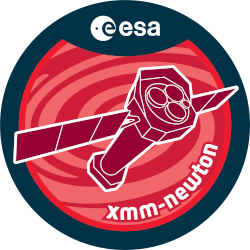

| Proposal ID | 092282 |
| Title | Serendipitous isolated neutron star candidates from the 4XMM-DR9 catalogue |
| Download Data Associated to the proposal | https://nxsa.esac.esa.int/nxsa-sl/servlet/data-action-aio?obsno=0922820201 |
| DOI | https://doi.org/10.57780/esa-k8u6s43 |
| Principal Investigator, PI | Dr Adriana Mancini Pires |
| Abstract | The large number of radio-quiet thermally emitting isolated neutron stars (INSs)in our local volume suggests that they belong to a neglected component of thepopulation. Only two such INSs are known at larger distances. We propose toinvestigate INS candidates from the 4XMM-DR9 catalogue to assess their long-termX-ray emission and improve spectral determination and localisation for follow-upstudies. Our program will explore a more remote and better characterised samplethan that detectable in the eROSITA All-Sky Survey. This fulfil proposal wasaccepted in AO20 and AO21 (IDs 088419, 090126; Pires et al. 2022). The twoobserved targets show remarkably soft and constant properties and highX-ray-to-optical flux ratios: results that validate our strategy to discover INSs beyond the solar vicinity. |
| Publications | No publications found for current proposal! |
| Instrument | EMOS1, EMOS2, EPN, OM, RGS1, RGS2 |
| Temporal Coverage | 2024-01-18T02:28:46Z/2024-01-18T15:05:26Z |
| Version | 21.23_20231215_1101 |
| Mission Description | The European Space Agencys (ESA) X-ray Multi-Mirror Mission (XMM-Newton) was launched by an Ariane 504 on December 10th 1999. XMM-Newton is ESAs second cornerstone of the Horizon 2000 Science Programme. It carries 3 high throughput X-ray telescopes with an unprecedented effective area, and an optical monitor, the first flown on a X-ray observatory. The large collecting area and ability to make long uninterrupted exposures provide highly sensitive observations. Since Earths atmosphere blocks out all X-rays, only a telescope in space can detect and study celestial X-ray sources. The XMM-Newton mission is helping scientists to solve a number of cosmic mysteries, ranging from the enigmatic black holes to the origins of the Universe itself. Observing time on XMM-Newton is being made available to the scientific community, applying for observational periods on a competitive basis. |
| Creator Contact | https://www.cosmos.esa.int/web/xmm-newton/xmm-newton-helpdesk |
| Date Published | 2025-01-31T00:00:00Z |
| Last Update | 2025-08-04 |
| Keywords | XMM-Newton, OM, RGS, EPIC, X-ray, Multi-Mirror, SAS |
| Publisher And Registrant | European Space Agency |
| Credit Guidelines | European Space Agency, Dr Adriana Mancini Pires, 2025, 'Serendipitous isolated neutron star candidates from the 4XMM-DR9 catalogue', 21.23_20231215_1101, European Space Agency, https://doi.org/10.57780/esa-k8u6s43 |